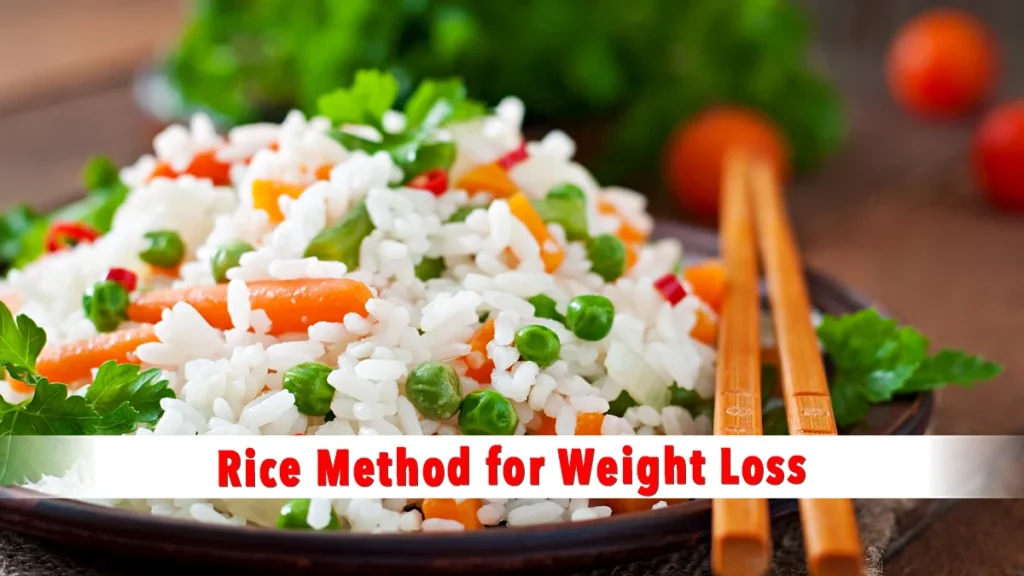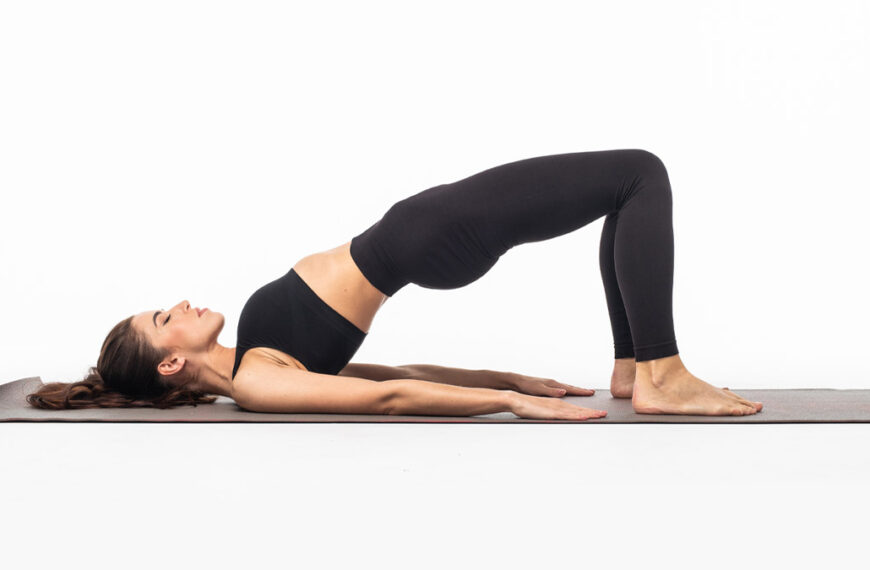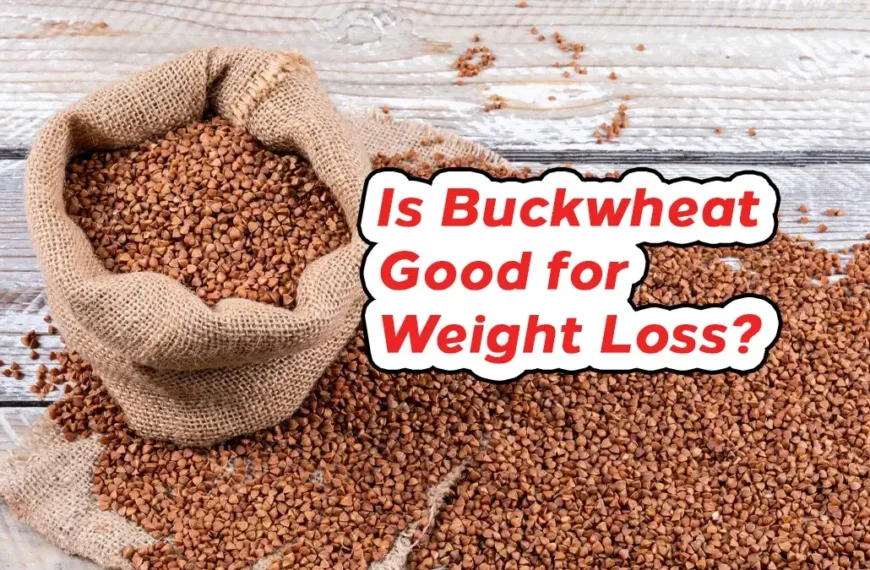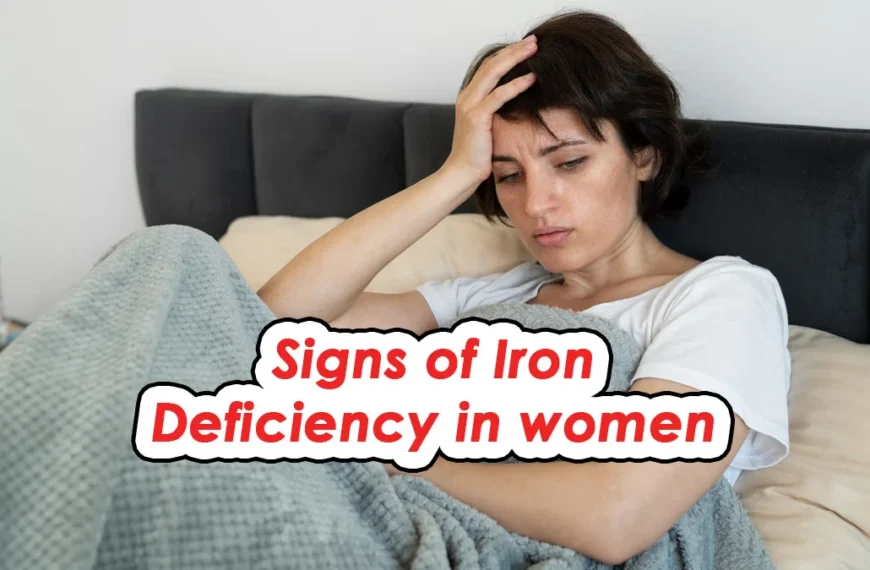Looking to shed those extra pounds naturally? Dive into the rice method for weight loss and discover how this simple yet effective approach can help you achieve your fitness goals.

In the pursuit of weight loss, people often resort to fad diets and extreme methods, neglecting simpler and more sustainable solutions. Enter the rice method for weight loss, which emphasizes portion control and mindful eating. In this detailed guide, we’ll delve into the nuances of this approach, discussing its advantages, how to incorporate it into your routine, and the possible challenges. Bid farewell to crash diets and welcome a healthier, more balanced approach to achieving your weight loss goals.
Understanding the Rice Method
Embarking on the rice method for weight loss involves incorporating rice into your daily diet strategically. While rice is often vilified in the realm of weight loss due to its carbohydrate content, when consumed mindfully and in moderation, it can actually be a valuable ally in your journey towards a healthier weight.
How to incorporate rice method into Your Weight Loss Diet
The Rice Diet is a low-calorie, low-sodium diet plan originally developed by Dr. Walter Kempner in the 1930s for treating hypertension and kidney disease. It primarily consists of rice, fruit, and simple sugars, with limited amounts of protein and fat. Here’s how you could adapt the principles of the Rice Diet into your weight loss diet:
- Choose the Right Rice: Choose whole grains such as brown rice over refined white rice. Brown rice provides higher levels of fiber and nutrients, making it a more beneficial option. Explore alternatives like wild rice, quinoa, or barley to add nutritional diversity to your diet.
- Focus on Portion Control: Keep your rice portions moderate and balanced with other food groups. Aim to fill about a quarter to a third of your plate with rice and complement it with lean protein sources like grilled chicken, fish, tofu, or legumes, and plenty of vegetables.
- Include Fruits and Vegetables: Integrate a diverse range of fruits and vegetables into your meals and snacks. These nutritious options boast low calorie counts and high levels of essential nutrients, fiber, and water content. By including them in your diet, you’ll feel satiated and content while effectively managing your calorie intake.
- Limit Added Fats and Sugars: Minimize the use of added fats and sugars in your meals. Instead of frying rice or adding sugary sauces, opt for healthier cooking methods like steaming, boiling, or stir-frying with minimal oil. Use herbs, spices, and citrus juices to flavor your dishes instead of high-calorie sauces or dressings.
- Stay Hydrated: Ensure you drink an ample amount of water throughout the day to maintain hydration and aid your weight loss journey. Occasionally, mistaking thirst for hunger may prompt unnecessary snacking. Drinking water can alleviate cravings and promote a sense of fullness, assisting in managing your appetite.
- Monitor Portion Sizes: Be mindful of portion sizes not only for rice but for all foods you consume. Use smaller plates and bowls to help control portions visually. Pay attention to your body’s hunger and fullness cues to avoid overeating.
- Exercise Regularly: Make regular physical activity a part of your daily routine to boost weight loss and improve your overall health. Strive for a mix of cardiovascular workouts, strength training, and flexibility exercises to achieve the best outcomes.
- Seek Professional Guidance: Consider consulting with a registered dietitian or nutritionist who can help you develop a personalized weight loss plan that incorporates the principles of the Rice Diet while meeting your individual nutritional needs and health goals.
Remember that sustainable weight loss involves making long-term lifestyle changes rather than following a short-term restrictive diet. Focus on creating a balanced and nutritious eating pattern that you can maintain for the long term.
Benefits of the Rice Method
The Rice Diet was initially developed as a therapeutic approach for hypertension and kidney disease, not specifically for weight loss. However, people have associated weight loss with this diet because it involves consuming mainly rice and fruits, which are low in fat and calories. Here are some potential benefits of the Rice Diet for weight loss:
- Low-Calorie Intake: Rice is relatively low in calories compared to many other foods, particularly when prepared without added fats or oils. By primarily consuming rice, you’re likely reducing your overall calorie intake, which can lead to weight loss if you’re in a calorie deficit.
- High Fiber Content: Brown rice, in particular, is high in fiber. Fiber helps you feel full, which can prevent overeating and promote weight loss by reducing overall calorie intake.
- Nutrient Density: While rice itself is not particularly nutrient-dense, it can be part of a balanced diet that includes other nutritious foods like fruits and vegetables. This can help ensure you’re getting essential vitamins and minerals while still controlling calories.
- Simple and Sustainable: The simplicity of the Rice Diet may make it easier for some people to stick to compared to more complex or restrictive diets. If you enjoy rice and find the diet easy to follow, you may be more likely to stick with it long-term, leading to sustainable weight loss.
- Potential for Lowering Blood Pressure: Although weight loss is not the primary aim of the Rice Diet, it was originally designed to help manage conditions like hypertension. If you have high blood pressure or other related health issues, following the Rice Diet may lead to improvements in these areas while also promoting weight loss.
However, it’s essential to note that the Rice Diet may not be suitable for everyone, and there are potential drawbacks to consider. For example, relying heavily on rice as the main food source may lead to nutrient deficiencies if not adequately balanced with other foods. Additionally, some people may find it challenging to maintain a diet that is so restrictive in terms of food variety. As with any diet plan, it’s essential to consult with a healthcare professional before making significant changes to your eating habits, especially if you have any underlying health conditions.
Diet Plan for Rice Method for Weight Loss
Here’s a sample diet plan incorporating the “rice method” for weight loss:
Breakfast:
- 1/2 cup of cooked brown rice
- 1 scrambled egg or tofu scramble (seasoned with herbs and spices)
- 1 cup of sautéed spinach, tomatoes, and bell peppers
- 1 small piece of fruit (e.g., apple, orange, or berries)
Mid-Morning Snack:
- 1 small serving of Greek yogurt or a handful of nuts (almonds, walnuts, or cashews)
Lunch:
- 1 cup of cooked quinoa or brown rice
- Grilled chicken breast or baked tofu (about 3-4 ounces)
- Mixed salad with leafy greens, cucumbers, carrots, and a light vinaigrette dressing
Afternoon Snack:
- Sliced vegetables (carrots, bell peppers, or cucumber) with hummus
Dinner:
- 1/2 cup of cooked black rice or wild rice
- Baked salmon or grilled shrimp (about 3-4 ounces)
- Steamed broccoli or roasted asparagus
- 1/2 an avocado or a drizzle of olive oil for healthy fats
Evening Snack (Optional):
- Air-popped popcorn or a small bowl of mixed berries
Additional Tips:
- Drink plenty of water throughout the day, aiming for at least 8 glasses.
- Limit added sugars, refined grains, processed foods, and high-calorie snacks.
- Pay attention to portion sizes and your body’s hunger signals.
- Include regular exercise like brisk walking, cycling, or strength training.
- Remember that this is just a sample plan, and it’s essential to adjust portions and food choices based on your individual calorie needs, preferences, and dietary restrictions. Consulting with a registered dietitian can provide personalized guidance tailored to your specific goals and health needs.
Our Other Latest Articles
Frequently Asked Questions
Can you lose weight on a rice diet?
Yes, you can lose weight on a rice diet by controlling portion sizes and opting for healthier varieties like brown or wild rice. Balancing rice intake with vegetables, lean proteins, and exercise is key to successful weight loss.
Does the rice water diet really work?
The rice water diet is not a guaranteed solution for weight loss. While some believe it aids digestion and boosts metabolism, its effectiveness varies among individuals. Incorporating it into a balanced diet and exercise routine may yield some benefits.
Can you lose belly fat with rice?
Losing belly fat solely with rice isn’t feasible. A balanced diet with controlled portions, including whole grains like rice alongside lean proteins, fruits, and vegetables, combined with regular exercise, is crucial for reducing belly fat effectively.
How to cook rice for weight loss?
To cook rice for weight loss, choose whole grain varieties like brown, black, or wild rice for their higher fiber content and lower glycemic index. Opt for cooking methods like steaming or boiling instead of frying, and avoid adding excessive fats or sauces.
Can I eat rice every day on the rice method for weight loss?
Yes, you can include rice in your daily meals, but moderation is key. Opt for whole grain varieties and be mindful of portion sizes to avoid overconsumption.
Will the rice method help me lose belly fat specifically?
While spot reduction is not possible, the rice method can contribute to overall weight loss, including reductions in belly fat. Pairing it with regular exercise can further enhance results.
Can I eat other grains besides rice on this method?
While rice is the focus of this method, you can certainly incorporate other whole grains such as quinoa, barley, or oats for variety and additional nutrients.
How quickly can I expect to see results with the rice method?
Weight loss outcomes differ based on individual factors like initial weight, metabolism, and physical activity. Consistent effort and patience are essential for achieving sustainable results over time.
Are there any potential drawbacks to the rice method?
While the rice method can be an effective tool for weight loss, it’s important to listen to your body and make adjustments as needed. Some individuals may experience digestive discomfort or bloating with excessive rice consumption.
Te Mend Final Thought
Incorporating the rice method for weight loss into your lifestyle can be a game-changer, providing a simple yet effective approach to shedding pounds and improving overall health. By prioritizing portion control, balance, and mindful eating, you can harness the power of rice to achieve your fitness goals in a sustainable manner.
“Good news! Te Mend is now available on WhatsApp & Telegram Channels. Subscribe today through the link and stay updated with the latest news!” Whatsapp & Telegram




